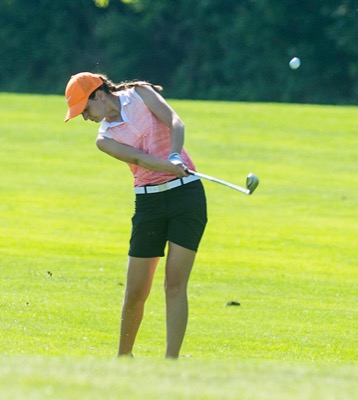Friday, June 15th, 2018
Spike seen in neck, head conditions in infants
Malady linked to baby seats, sleepers, local health officials say
By Sydney Albert
CELINA - Local health professionals are seeing an increase in cases of torticollis and plagiocephaly in infants, conditions characterized by strained necks and flat heads, that they believe are linked to the overuse of inclined baby seats/sleepers.
Torticollis is usually due to positional abnormalities during fetal development, according to Mercer Health pediatrician Melanie Jungblut. If the uterus experiences crowding from a change in shape or the development of twins, a baby's head can end up facing one direction more than others, causing shortening of the muscles on one side of the neck.
This shortening can cause babies to continually favor facing one side more than another, which worsens the neck condition and can lead to plagiocephaly, or a flattening of the skull on one side.
"You can't talk about torticollis alone. You have to talk about torticollis and what's called plagiocephaly together, because they really occur together," Jungblut told the newspaper.
Torticollis is common among newborns, but Jungblut said pediatricians at Mercer Health have started seeing more cases of torticollis and plagiocephaly in older infants. They believe it's due to parents letting their children rest in baby seats/sleeper devices too long.
Grand Lake Health System pediatric physical therapist Andrea Spencer, agreed, saying "the number seems to be exponentially rising."
The one common factor among babies afflicted by the conditions are the use of sleepers that "cradle" infants in semi-reclined positions, she said.
Babies placed in such devices cannot turn their heads as much as they would on a flat surface. Their neck muscles are not being exercised evenly, and their heads are more likely to flatten on one side. They also are unable to stretch or extend their spines.
Jungblut said tired parents may not want to bother their children once they're asleep in the sleepers. Parents have told her they believe their babies prefer the sleepers over a flat crib.
Babies probably do indeed like the devices, she agreed, because it effectively puts them in a ball, curling them up in a manner similar to how they were in the womb.
However, the best way to put a child to sleep is on his or her back on a flat surface like a crib.
"(The sleepers) are not flat. I've seen a huge increase (in cases) where parents use them," Jungblut said. "(They) are fine if you only use them for 2 to 5 minutes, but you're better off having your baby lay flat and then just altering the position the baby is in."
Switching the way a baby faces in a crib encourages them to look around more. Jungblut said if parents constantly appear at one side of a crib, even infants who are only a few weeks old will learn to expect them at that side, and they will start to look in that direction more often.
Additionally, Jungblut suggested parents try to put their children to bed when they're drowsy, but not completely asleep. Sleepy children will stir more and move their heads from side to side. Parents should also make sure to switch up how they hold their children to ensure their infants are exercising their neck muscles to look at them.
Physical therapy and exercises parents can do at home with their infant are usually enough to treat torticollis and can help correct flat heads. However, if the cranial abnormalities are severe or if the child is of an age when the skull is not as malleable, it can result in long-lasting deformities, Spencer said.

